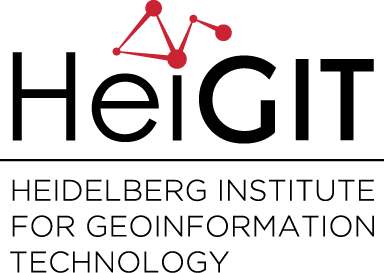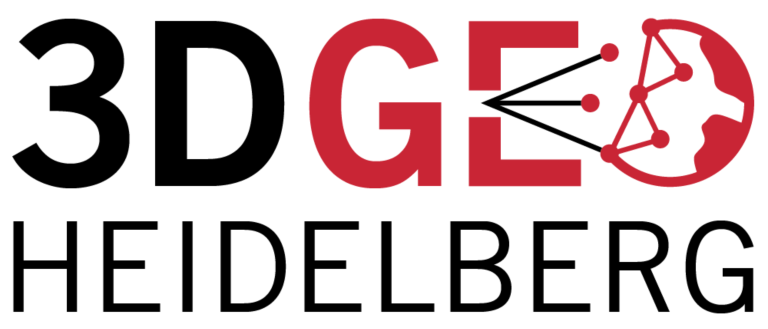Category: Research
-
2021 Volcanic Eruption in La Palma (Spain) continues – Explore the temporal changes of the Lava Field in OpenStreetMap on ohsomeHeX
On the 19th of September 2021 a volcanic eruption on the Canary Island of La Palma started. Since then the resulting lava field is constantly growing and continues its destructive expansion. According to an article in the spanish newspaper El Pais, after one month of eruptions – till 19th of Oktober 2021- the volcano destroyed…
-
Automatic mapping of national surface water with OpenStreetMap and Sentinel-2 MSI data using deep learning
Large-scale mapping activities can benefit from the vastly increasing availability of earth observation (EO) data, especially when combined with volunteered geographical information (VGI) using machine learning (ML). High-resolution maps of inland surface water bodies are important for water supply and natural disaster mitigation as well as for monitoring, managing, and preserving landscapes and ecosystems. In…
-
Alexander Zipf selected as Marsilius Fellow 2021/2022 – Project with HIGH on Climate Change and Health
Many pressing problems of our time – climate change, aging societies, questions of modern medicine – cannot be solved by one discipline alone. It is becoming ever more urgent for scholars to collaborate across disciplines – natural sciences, life sciences, and social sciences, law, and humanities. The Marsilius Kolleg at Heidelberg University is an institutional…
-
Uncovering the dynamics of the inland dunes in Sandhausen using UAV-borne 3D data acquisition
For the first time, the inland dunes in Sandhausen (Baden-Württemberg, Germany) have been captured by UAV-borne photogrammetry and laser scanning. The dunes are a precious habitat for many specialized plants and animals. They formed during the last ice age by sand drift from the Rhine valley. The large inland dunes, originally stretching from Karlsruhe to…
-
Kick-off workshop for the research program “Innovation for adaptation to climate change” by Baden-Württemberg Stiftung
The project HEAL (HeiGIT, GIScience, TdLab Geographie) is funded by the Baden-Württemberg Stiftung as part of the research program “Innovation for adaptation to climate change“. HEAL aims at an extension of the openrouteservice to allow the generation of heat avoiding routes, using Heidelberg as a test case. The project aims specifically at vulnerable groups such…
-
HeiGIT and MapAction at FOSS4G 2021: Using the ohsome quality analyst to support humanitarian mapping
Last week, the annual conference FOSS4G (Free and Open Source Software for Geospatial) has been taken place online. The conference is organized by The Open Source Geospatial Foundation (OSGeo) and attracts over 1000 developers, users, decision-makers and observers from a broad spectrum of organizations and fields of operation each year. HeiGIT and MapAction contributed a…
-
Impulse aus der Corona-Krise
“International erfolgreiche Wissenschaft ist bislang untrennbar verknüpft mit weltweiter Reiseaktivität. Der vor allem durch Flugreisen verursachte Treibhausgasausstoß steht im Widerspruch zum Klimaschutz. Die Corona-Krise wirkte disruptiv auf etablierte Praktiken des Austauschs und zeigte plötzlich Wege auf, die zuvor kaum denkbar waren. Doch was passiert nach der Pandemie? Wie kann es gelingen, auf den Erfahrungen aufbauend,…
-
Today paper on green routing at GIScience conference 2021
The “11th International Conference on GIScience” 2021 started! Our full paper related to MeinGrün project and openrouteservice will be presented this Tuesday 13:30 CET in Session 3 “Mobility”: 13:30-13:45: Christina Ludwig, Sven Lautenbach, Eva-Marie Schömann and Alexander Zipf. Comparison of simulated fast and green routes for cyclists and pedestrians. Routes with a high share of…
-
New training program “Research Training on Harnessing Data Science for Global Health Priorities in Africa”
A new training program, “Research Training on Harnessing Data Science for Global Health Priorities in Africa” has been granted by the US National Institute of Health (NIH) and will build upon existing data science research capacity at the partnering institutions to enhance innovative new data science research capacity related to health priorities in Africa. Harvard…
-
TdLab Geography at the ITD21 conference
From 13 to 17 September 2021, the “International Transdisciplinarity Conference ITD21” took place in online format. The TdLab Geography participated with the contribution “Towards a co-design of adaptation measures to heat events in cities: examples from Heidelberg, Germany”. In a self-produced video, Nicole Aeschbach and Kathrin Foshag presented two studies on climate change adaptation from…
-
A Web App to generate and disseminate knowledge on urban green space qualities and their accessibility
Urban green spaces (UGSs) can provide important ecosystem services for citizens and their well-being. To make use of these services according to UGS user demands, urban residents, tourists, and city administrations should know where UGSs are located, what qualities they have and how to reach them on convenient routes. A new open access paper at…


